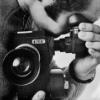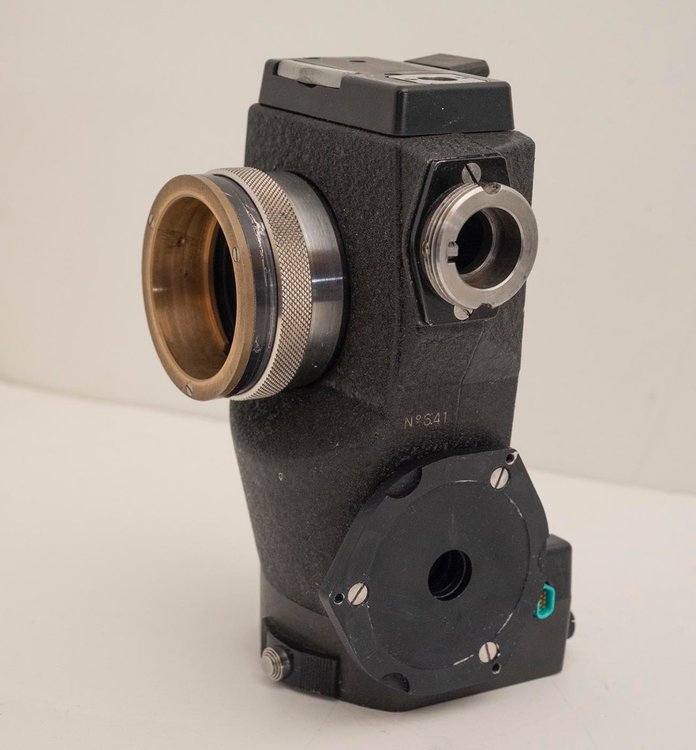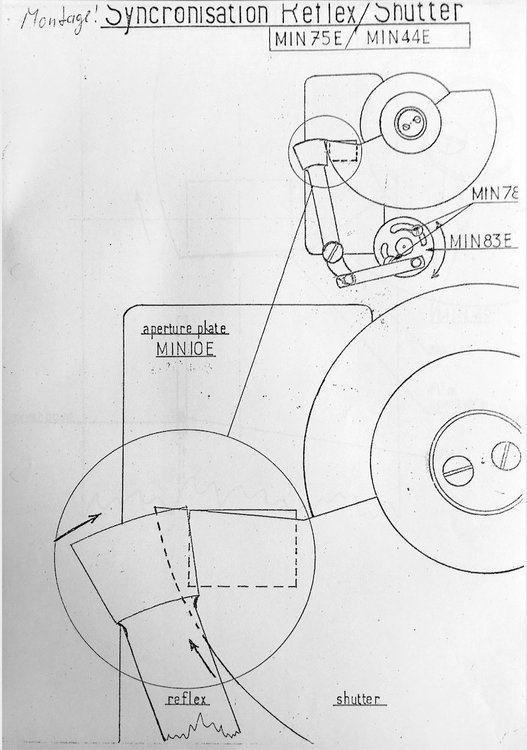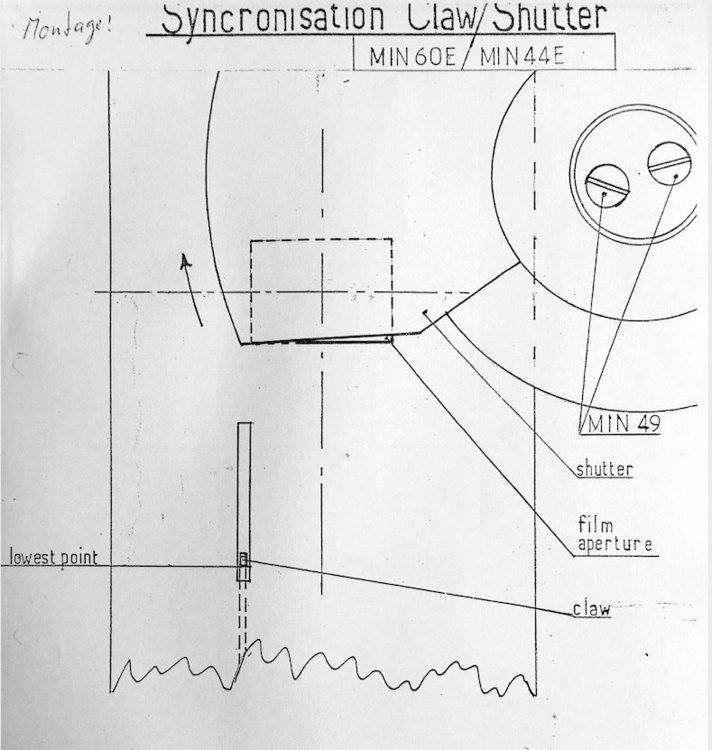-
Posts
248 -
Joined
-
Last visited
Profile Information
-
Occupation
Other
-
Location
Brussels, Belgium
Recent Profile Visitors
-

Adapting a CP-16 viewfinder to an Eclair ACL
Boris Belay replied to Geffen Avraham's topic in Eclair
Duncan, I have to believe you on this one and I stand corrected. Forget what I have said about the ACL viewfinder ! I believe the NPR and CP viewfinders are swappable... Sorry about the confusion! Boris -
-
Boris Belay started following new ALCS crystal sync motor for Eclair ACL , Adapting a CP-16 viewfinder to an Eclair ACL , The NPR viewfinder thread and 3 others
-

Adapting a CP-16 viewfinder to an Eclair ACL
Boris Belay replied to Geffen Avraham's topic in Eclair
The CP Viewfinder has the same mount as the removable Angénieux VF of the ACL (and both kinds of NPR viewfinders). The Original ACL Angénieux viewfinder is not removable (unless you use tools), so they are not compatible. The mount for the later ACL Kinoptik viewfinder is also not compatible. Optically, I'm not sure. Aapo's hand-held test may be correct, but hard to tell without an actual mount. Below is the part you would need. -
Cinema Products used the same VF mount on their reflex models, so the CP viewfinders are compatible with NPRs as far as I know (no first--hand experience). ACL VFs are not compatible (wrong optical distance to the Ground Glass), although Eclair USA sold the Kinoptik NPR VF for the ACL with an adapater ring (it's an option mentioned in one of their Price List from the mid 70's). Which means the distance is longer on the ACL, so conversely there is no way to adapt an ACL VF to a NPR.
-
Duncan, the 'loosey-goosey' design that you are complaining about is an intentional one which allows you to adjust the interplay of the meshing gears to your 'liking', depending on your grease, for instance, but mostly to minimize noise and power draw. The same adjustments are possible on the camera body on the axis that drives the shutter (back of the main plate, so visible without removing the main plate from the body). When I adjust an ACL, I always use an amp-meter to set it to the least current draw (and noise). This also holds when resetting the motor-bearing plate (the 4-screw plate onto which the motor attaches).
-
The ACL magazines also take either winds, you just need to make sure the perforations are towards the bottom of the magazine when you load them in your bag. Then the film either unwinds clockwise or counter-clockwise. Both work fine, as discribed in the manual. Now, if Kodak were to make those A-minima rolls again (or if you were to get on aold stock of them), remember that they can be used in both NPRs and ACLs, since you can pull out he plastic flanges and you get a normal Kodal film core.
-
Coming late on this topic, but I would say that flicker on a standard 16 ACL is most likely due to a timing issue. On a Super-16 modified camera, the shutter does noeed to be widened or flicker will appear under strong light conditions. FYI (from Eclair maintenance docs ) :
-
As far as I know, NPRs came with 60m. platers only. The 120m. ones were introduced with the ACL (120m. mag), but I don't think they were adopted into the NPR even then. The 60m. platters work fine with 120m. loads, even on the take-up side. Regarding foam, it looks like you did a good job on the magazine fronts. Regarding the sides, i believe (but again, the NPR is not my specialty) that the material was faitly strong rubber, not foam. As a result, the doors must be pushed quite ard towards the front to close, ensuring a tight fit where it's needed. In fact, I think I remember seeing those side strips made with a slight overhang (so not a square section) under which the door fits. Obviously, this late in the Ecliar game, anything that works will do. But best to know what they started with.
-
Thanks Aapo, Now I can see how it looks on the camera. A few questions : does your system accept standard 12 Volt batterties ? I see "18 to 20 Volts" inscribed on the connecting box. How is mirror inching done ? Is there a system in the motor that brings the mirror back into shooting place ? And if not, is there an inching knob, or do you need a tool (screwdriver,...) ? Where can you get spare connectors for the cables of your system ? I see that they are not Tuchel or Lemo connectors. Is it possible to have the connecting box orientated differently so that the power and control cables point towards the back or the bottom for better ergonomics ? Also, but this is a more general question, since the connecting box is just that, why did you not opt to have the control box attached to the back of the motor unit, the way the origina ACL motors were designed ?
-
Good one ! That is indeed the preferred option, introduced by Eclair in their later cameras. Aaton also did it that way, so it must be good !
-
Regarding ACL mags, only the last series (SDxxx) have the newer kind of pressure plates. They were realeased with ACL IIs (or possibly just before, when the taller 2-part base was introduced (but still Angénieux VF). 60m. mags were just labeled 'Dxxx". The incremental series system A/SA, B/SB, C/SC, and D/SD each introduce minor modifications to the (French-built) mags, like improved 2-roller film-path (B/SB and later) and the new pressure plate (D/SD). I don;t know the NPR mags as well, but the 2-part pressure plate was introduced earlier than on the ACL, on the mags that bear the mention "Eclair 16 II" on the plate. I imagine that other changes were introduced on the body and mags then, although, again, I am not as familiar with the NPR. Oddly, there is no mention of an Eclair 16 II model in any of the officila Eclair litterature I have seen (unlike the ACL II, which is mentioned of course). And for those who are tempted, no, the pressure plates of the NPR mags are not compatible with those of the ACL, despite being very very similar...
-
Hi Aapo, Do you have images of the complete 12-speed kit mounted on a camera ? I'm wondering about the ergonomics. Thanks, Boris
-
I wonder if it's a British-made camera, in which case, the body's serial would be engraved next to the film gate, on the left casing. And perhaps the serial mentioned by the orginal seller is the one of the motor ? That's engraved on the back of the motor casing (DEM xxx). The image on the film is not affected by the viewfinder : there is nothing between the lens and the film during exposure on an ACL (and most reflex 16mm. cameras, except Bolex H16s). A distortion, mark, or lack of sharpness in the viewfinder only affects your shooting comfort (and alternatively, your viewfinder needs to be precisely matched to your flange focal distance (lens to film) to allow you to focus and frame properly).
-
I checked the eBay listing, and the seller said the serial was 1391, which is a closer match to the features on the camera. Which one is it ? (It's engraved below the viewfinder.)



.thumb.jpg.32a8ef180f0966e046cc1cf4d178ccdf.jpg)





